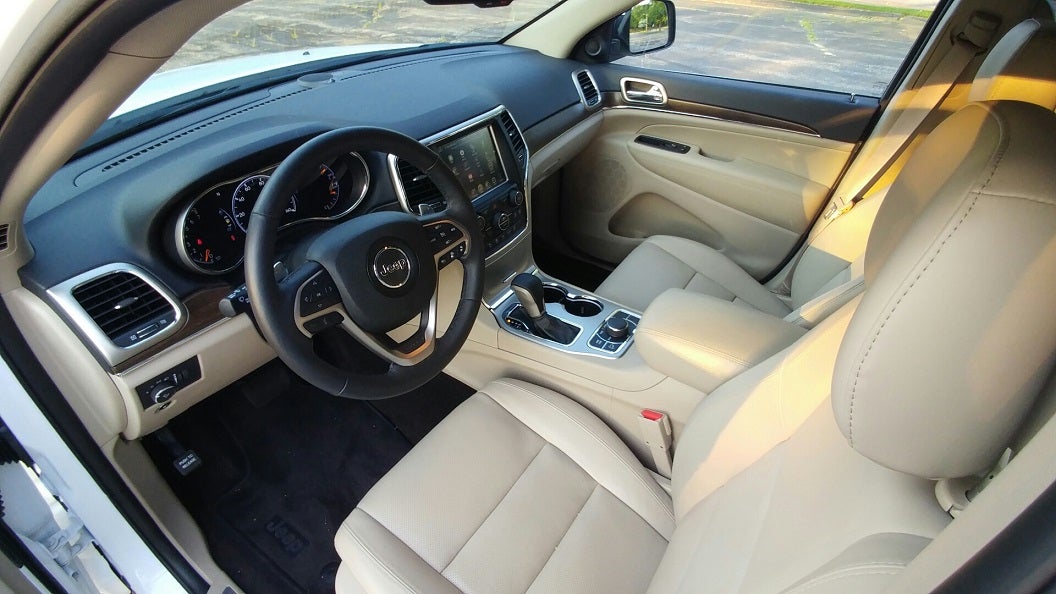 "Turbineguy: Nom de Zoom" (will-alib)
"Turbineguy: Nom de Zoom" (will-alib)
09/29/2016 at 00:30 ē Filed to: willalibrandi, review
 0
0
 0
0
 "Turbineguy: Nom de Zoom" (will-alib)
"Turbineguy: Nom de Zoom" (will-alib)
09/29/2016 at 00:30 ē Filed to: willalibrandi, review |  0 0
|  0 0 |

2016 Durango Citadel AWD
The Dodge Durango and Jeep Grand Cherokee are corporate cousins that share the same platform. That means engines too, like the Pentastar V6 powering both test subjects here. Now with gas prices currently low, you might be tempted to check off the 5.7 hemi option on the order sheet. (or the Jeepís 6.4 hemi if youíre really after zoom-zoom power) But the base 3.6 Pentastar motor with its 295hp/260lb-ft gets the job done and should be perfectly adequate for most buyers. Itís a big improvement over the previous 3.7, and a huge step up from the 3.9 before that. Both vehicles use an 8-speed ZF-designed automatic transmission built by FCA.

2016 Grand Cherokee Limited 4X4
Jeep offers the Grand Cherokee with three different 4wd systems for the owner needing different levels of off-road capability. Quadra-Trac I, Quadra-Trac II and Quadra-Drive. These are not an option for the Dodge, whose driver will have to make do with a single-speed AWD system (V6 only). Itís definitely not geared toward heavy off-road use like the Jeep but still useful in low traction conditions. Boiled down, the Durango is somewhere in between a crossover and SUV. Itís a ute that is rugged enough to go offroad but still has good on-road manners.

Dodge has gone upscale on the Durangoís interior, and the leather seats and two-tone door panels give the inside a refined appearance. The instrument panel resembles the one in the Charger and has the excellent Uconnect touch screen in the center stack. The primary gauges are made up of a 7.0-inch configurable display screen. The rotary shifter is a bit of an oddity, but functional nonetheless. The third row seating is easily accessible by tipping forward the second row captainís chairs, and will fit average size adults fairly comfortably. Visibility from the driverís seat is excellent owing to the raised seating position and surrounding expanse of glass.

The Jeepís interior felt a bit more upscale than the Dodgeís due to the continuation of the two-tone element on the dash and real wood trim on the doors. UConnect appears on the Grand Cherokee, although itís the smaller 5" screen compared to the 8.4" screen in the Durango. As a two-row SUV youíre limited to five passengers but those riding in back get comfortable seats with good interior space. Driver visibility is very good, although the lower roofline of the Jeep means smaller side windows when compared to the Dodge.

Whatís curious about the high-trim Citadel is that Dodge didnít make the V8 standard, but instead an option - this is probably done to boost CAFE figures. The 5.7 liter hemi is optional on the Citadel, and soon may be joined by the 6.4 liter hemi on the 2017 Durango SRT. No Hellcat version though.

Thereís no shortage of engine options if youíre a Jeep buyer. The Pentatstar 3.6 is the base motor, while the GC is also available with the 5.7 liter hemi V8. The Jeep is one of few SUVs to offer a diesel; in this case itís FCAís excellent 3 liter V6. Going up the performance ladder the Grand Cherokee SRT comes with the honkiní 6.4 liter hemi, and if thatís not insane enough the Trackhawk will be available next year with the 707hp Hellcat V8.
Driving dynamics of both vehicles are (surprise) very similar. The 3.6 motivates both very nicely and offers both vehicles a 6,200lb tow capacity. EPA ratings are similar at 18 city/25 highway/21 combined. There is a fair amount of wind noise at speed, helped by the large side mirrors. After all, these are essentially bricks pushing their way through the air. Handling is competent for two vehicles nearing 5,000lb curb weight. Road manners are much like a crossover, with quick steering response and a smooth, compliant ride. Comfortable, roomy interiors with available electronic entertainment options make them good choices for road tripping families. Dollar-wise both vehicles are close in price. Base price/as tested for the Jeep is $39,365/$48,100. The Durango rings in at $43,895/$50.670.
Bottom line? The Jeep may appeal more to the adventurous type (who buy into the marketing hype) whereas the Durango with its 3-row seating might well be seen as a minivan alternative for those not comfortable with that image. It may seem like splitting hairs, but buying decisions are often emotionally driven. While the Jeep has a slightly more refined look and feel, the Durango is an equally capable people mover with the benefit of a 3rd row.